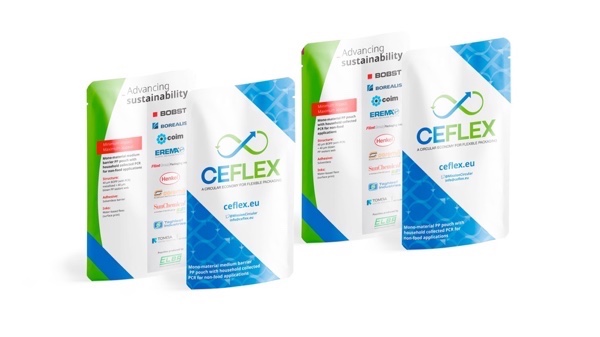Consumables
CEFLEX QRP project develop mono-material duplex laminated pouches using PP recyclates

Tuesday 26. July 2022 - The trials show that flexible packaging waste can indeed be sorted and recycled into fractions that can be made into resins to produce film destined to non-food packaging applications. This can include household cleaning products, like dishwasher tablets.
The CEFLEX initiative brings together more than 180 European companies, associations and organizations that represent the entire value chain of flexible packaging
To help boost recycling rates and expand sustainable end markets, a team of CEFLEX stakeholders developed a Quality Recycling Process (QRP). The scope of QRP is to mechanically recycle a higher percentage of PE (polyethylene) and PP (polypropylene) than currently done for non-food contact film applications, since flexible packaging from household waste has very low recycling rates in Europe. After five semi-industrial trials, the final objective is to now build an industrial scale QRP waste processing demonstration plant that will run commercially by 2023.
The trials show that flexible packaging waste can indeed be sorted and recycled into fractions that can be made into resins to produce film destined to non-food packaging applications. This can include household cleaning products, like dishwasher tablets.
What about the performance of the film during printing, converting through to the end product displayed at the point of sale?
To test and prove the validity of the concept of using recycled polymers in this respect, collaborative task teams of CEFLEX stakeholder companies were set up to create a set of samples using PE and PP recyclates printed with CEFLEX artwork for different applications, for example, stand-up pouches, labels and shrink sleeves.
BOBST has taken part in a trial to develop CEFLEX stand-up pouches. The coating, laminating, printing, and vacuum metallization steps were carried out in its Competence Centers in Italy, Germany, and the UK. Other partners in the pouch making trials were Taghleef Industries for the rPP film, Borealis for the sealant film, Coim, Henkel and Sun Chemical for the adhesives, Flint Group for the inks, and Elba for pouch making.
Two full PP-based solutions, using films made from rPP resins from the CEFLEX QPR trials were produced and tested using different consumables.
1. Mono-material PP duplex laminated pouches for non-food & medium-barrier applications – Metallized (embedded) and CI flexo surface print
Water-based inks
Substrate rBOPP 40 µ
Solventless barrier adhesive
High performance blown sealant PP
2. Mono-material PP duplex laminated pouches for non-food & non-barrier applications – Non-metallized & CI flexo surface print
Water-based inks
Substrate rBOPP 40 µ
Solventless adhesive
High performance blown sealant PP
From the point of view of the machinability of the Post Consumer Recyclate (PCR) containing substrates, the trials conducted on the BOBST vacuum metallizing, laminating and CI flexo printing machines, as well as on the Elba pouch making machine, have shown that they can be processed on standard equipment without need for adaptation. This confirms that PCR content is no impediment for the use of such material on converting equipment, neither from the point of view of the substrate functionality nor of the equipment productivity.
Commenting on the outcome of the pouch making trials, Dana Mosora, Workstream Manager at CEFLEX, said “The QRP project is about pushing the boundaries on what is possible with rPP and recycling. The successful outcome of the pouch making trials is a further demonstration that a much greater percentage of flexible packaging waste can be returned to the economy and reach a wider range of end-market segments for non-contact food applications.”
